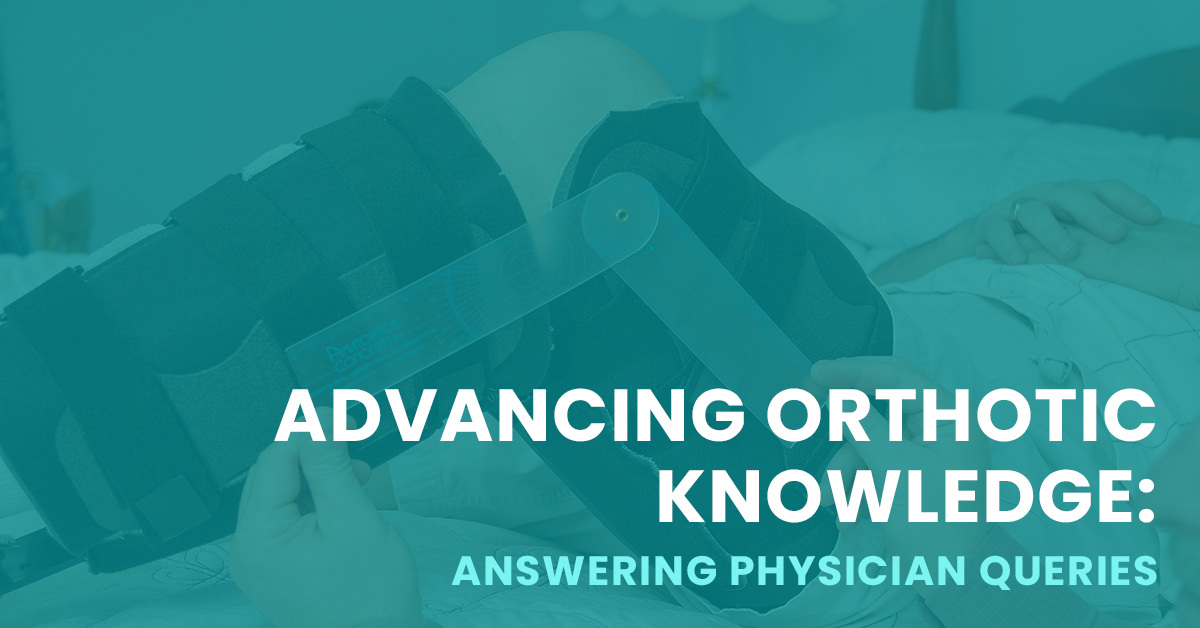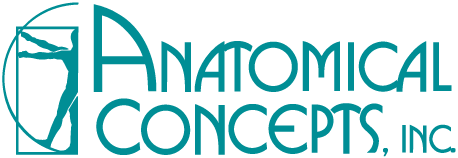
As we collaborate with physicians on the best ways to treat their patients suffering from lower extremity injuries or conditions, we often encounter their thought-provoking questions. In a healthcare environment characterized by constant evolution, physicians seek insights about the benefits and innovations of orthotic care.
This blog includes a series of questions that reflect the curiosity of medical professionals navigating the complexities of orthotics. In answering their queries, we explore the intersections of technology, innovation, and patient-centricity that define our thought leadership in the orthotic industry.
Q: How do orthotics align with evolving healthcare trends and patient-centered care?
A: Orthotics are pivotal in promoting patient-centered care in a dynamic healthcare landscape. ACI acknowledges the shift toward personalized treatment plans, and our orthotic solutions are designed to align seamlessly with evolving healthcare trends, ensuring individualized care and optimal patient outcomes.
Q: Can you discuss the role of orthoses in addressing musculoskeletal challenges?
A: As exemplified by ACI's RIBBY™ Orthosis, Dynamic orthoses offer a revolutionary approach to orthotic care. Combining custom-fit design with articulated features, our orthoses provide continuous biomechanical support, adapting to patients' movements for 24/7 care. This dynamic approach is pivotal in precisely addressing a spectrum of musculoskeletal challenges.
Q: How does ACI integrate technology and innovation into its orthotic solutions?
A: ACI is at the forefront of integrating technology and innovation into orthotic solutions. From leveraging advanced materials for comfort and durability to incorporating dynamic features that enhance patient function, our commitment to technological advancements ensures our orthoses are responsive to patient needs and setting new standards in orthotic care.
Q: How does ACI balance cost-effectiveness and profitability in orthotic care?
A: ACI understands the delicate balance between cost-effectiveness and profitability in orthotic care. Our innovative solutions, like the EMO™ Elbow Orthosis, showcases our commitment to providing cost-effective options without compromising quality. By optimizing designs and leveraging expertise, ACI ensures physicians can offer profitable orthotic care without compromising patient outcomes.
Q: Can you share insights into ACI's vision for the future of orthotics and patient care?
A: ACI envisions a future where orthotic care is seamlessly integrated into holistic patient care plans. Our ongoing commitment to research, innovation, and collaboration positions us at the forefront of shaping the future of orthotics. We foresee a landscape where orthotic solutions not only address current challenges but anticipate and adapt to emerging healthcare needs for the betterment of patient care.
Q: How do orthotics address foot drop, and what role do they play in rehabilitation after a stroke?
A: Orthotics, such as Ankle-Foot Orthoses (AFO), are designed to support and control the ankle and foot. In the case of foot drop, where the foot struggles to lift properly during walking, AFOs offer stability and prevent the foot from dragging. This aids stroke survivors in regaining a more natural gait pattern during rehabilitation, promoting mobility and reducing the risk of falls.
Q: Can orthotics assist in managing gait abnormalities associated with cerebral palsy?
A: Yes, orthotics are crucial in managing gait abnormalities in individuals with cerebral palsy. AFOs are often prescribed to address issues like toe-walking or spasticity. By providing support and alignment to the ankle and foot, orthotics help enhance stability, improve walking patterns, and increase overall functional independence.
Q: How do orthotic solutions contribute to musculoskeletal injury immobilization and rehabilitation?
A: Orthotic solutions are instrumental in stabilizing and supporting affected joints during musculoskeletal injury rehabilitation. By providing controlled movement and support, these orthoses prevent further damage, promote proper healing, and facilitate a smoother rehabilitation process.
Q: Can orthotics benefit conditions affecting the knee joint, such as postoperative recovery or injuries?
A: Absolutely. Orthotic solutions, including Knee-Ankle-Foot Orthoses (KAFO), are designed to offer support and stability to the knee joint. They play a vital role in postoperative recovery by limiting movement, preventing excessive stress on the knee, and supporting the healing process after surgeries or injuries.
Q: How do orthotics contribute to the overall well-being and daily activities of individuals with lower extremity conditions?
A: Orthotics are customized to meet the unique needs of individuals, ensuring that they can engage in daily activities comfortably and with enhanced biomechanical support. From managing foot drop to stabilizing knee joints, orthotic solutions contribute significantly to improving overall mobility, independence, and the quality of life for those with lower extremity conditions.
These answers highlight the versatility and effectiveness of orthotic solutions in addressing various lower extremity conditions and supporting individuals in their rehabilitation and daily lives. From personalized approaches and dynamic orthoses to the seamless integration of technology, ACI remains at the forefront of shaping the future of orthotics.
 330-757-3569
330-757-3569




